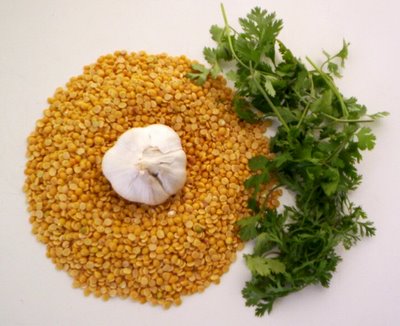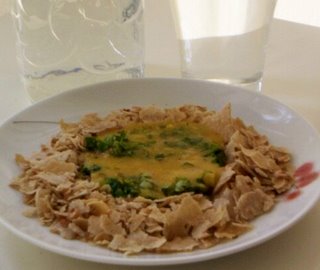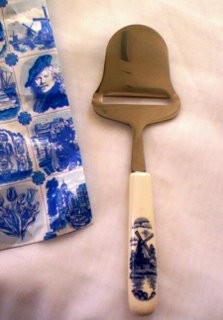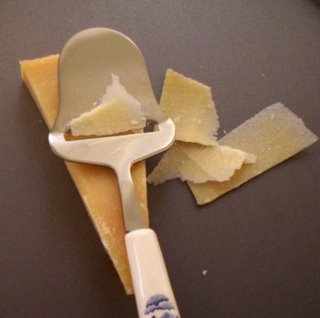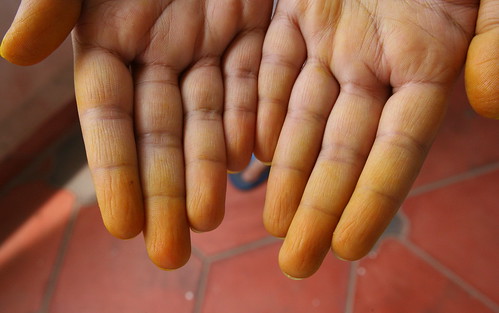Mythili of Vindhu has urged us food-bloggers to write about our favourite spice for her event 'Mistress of Spices'. And no, we are not talking about Aishwarya Rai here, as Mythili too is prompt to point out. (A more apt title for Ms. AR would be 'Mistress of Failed Relationships', whaddya say? Anyway, her personal life is none of our business, right? Right??)
Coming back to the spices, I chose to write about Asafoetida because
a) It is one of my favourite spices. Meaning I would feel handicapped, if I didn't have it in my kitchen.
b) I use it a lot. A lot more than my mother and the women in my parents' families. It is the Konkani influence, I guess. (A proof of that is that my mother-in-law says the word 'Hingu' at least five times, when she is explaining a recipe to me, and that even when the recipe does not include asafoetida. )
c) I have three small plastic bottles of asafoetida in my kitchen drawer right now. Need I say more?
So, here are the facts regarding Asafoetida
Name
Asafoetida gets its name from the Persian aza, for resin, and the Latin foetidus, for stinking. Its pungent odour has earned itself a lot of mean names e.g. it is called Teufelsdreck in German (literally meaning Devil's Dung). C'mon, it's not that bad, is it? In many North Indian languages and in Marathi, it is called 'Hing'; in Konkani 'Hingu'; in Telugu 'Inguva' and in Tamil 'Perungaayam'. Please do let me know in your comment the name for asafoetida in your language, in case it is not mentioned here.
Cultivation and Harvest
Asafoetida is mainly grown in Iran (the country of its origin), Afghanistan and in India. Can you guess where it is grown in India? In the land of saffron, Kashmir. Surprising, isn't it? I didn't know this until I started looking for information about this spice on the internet, thanks to Mythili.
The plant of asafoetida is found in natural forests, where rarely anything else grows. It grows about 2 metres tall, and is useful only once it is about four years old. The older the plant, the more productive it is. The time to start harvesting the gum from the rather succulent stem and the root is just before flowering, which is in the months of March / April.
An incision is made in the upper part of the root/lower part of the stem and the exuding gum/latex is collected. Several incisions can be made in the root/stem till there is no more gum oozing. This process can last up to three months and one plant can yield up to 2 pounds of gum. The resinous gum is greyish-white when fresh, and darkens to a deep yellow/amber when dried. Chunks of asafoetida resin are broken off to be sold commercially. The gum is seldom sold in its pure form. It is often combined with Arabic gum, wheat/rice flour, turmeric, etc. and sold as Compounded Asafoetida.
Which brings us to its Culinary Uses
I will write here about the use of this spice only in Indian cuisine, because I am not familiar with any other.
1. Asafoetida is used in many ways in lentil and/or vegetable preparations. Three ways known to me are
a) Adding the powder/granules to the hot oil while making Tadka.
b) Adding the powder to the preparation just before turning the heat off and putting the lid on.
c) Adding water in which a piece of asafoetida has been dissolved to the preparation before putting the lid in the end.
2. Asafoetida is used as an important condiment in pickles, relishes/chutneys and papads.
Asafoetida is usually used only in minute quantities, because even a little of it goes a long way. Although its smell is strong (I like it actually) when raw, it turns into a pleasant aroma when cooked. Indian preparations with lentils and beans are quite unthinkable without the use of this spice. The reason being its medicinal properties.
Medicinal Properties
The biggest property of asafoetida is that it aids digestion. It can lesson flatulence and give relief from painful gas. Since lentils and beans are supposed to be hard to digest, it is always a good idea to add a pinch of this stinking gum to the dish.
A medicine that comes to my mind when I think of asafoetida is the Ayurvedic preparation, Hingashtak Choorna. Earlier, families used to have their own recipies of Hingashtak, because it is apparently easy to make, since the other herbs and spices, which go into it are easy to find in an Indian kitchen. I don't think it is made at home any longer. However, several boards advertising the Choorna of various brands are always hanging in drug stores/pharmacies back in Pune.
An interesting fact that I came across on this website was that it was believed that asafoetida enhanced singers' voices. In the days of the Moghul aristocracy, the court singers of Agra and Delhi would eat a spoonful of asafoetida with butter and practise on the banks of the river Yamuna.
A common home remedy up my sleeve for painful gas is to have a generous pinch of asafoetida dissolved in buttermilk or lukewarm water. You tend to give out a loud and hearty burp (A happy burp? ;-)) within minutes of drinking it, and that gives immediate relief. However, never have more than 1/8th of a teaspoon of asafoetida at one time. Otherwise, it can result in loose motions.
Do you know of any other home remedies using asafoetida? Please do let me know.
For some more information on this spice, please visit here.
(And by the way, can you guess what the white plastic bottle at the back in the picture on top is standing on?)

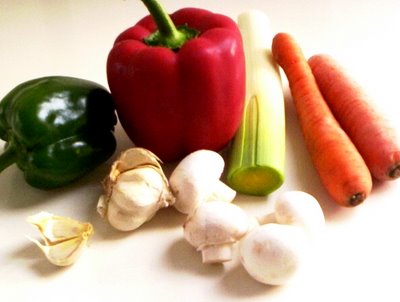

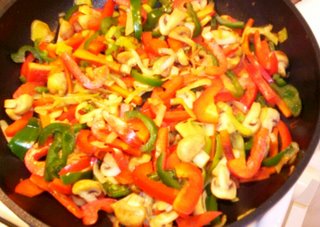














 5. Once the rice is cooked, it will look like in the picture below. The rice grains will have attained their full cooked length, they will be somewhat separate and almost all the water will have dried out. The grains on the top surface will still be 'sleeping'.
5. Once the rice is cooked, it will look like in the picture below. The rice grains will have attained their full cooked length, they will be somewhat separate and almost all the water will have dried out. The grains on the top surface will still be 'sleeping'.
